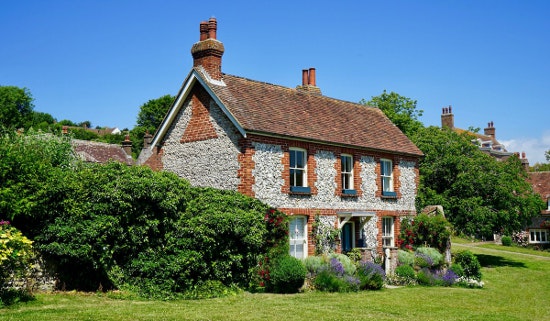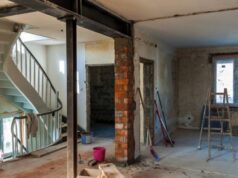To ensure that your house lasts for many years, it is necessary to increase its durability. You can take many actions to increase a home’s longevity and resistance to wear and tear, whether you are constructing a new one or remodeling an existing one.


A house that can last for a very long time is a wise investment and a testament to the builder’s skill and attention to detail. A sturdy home can withstand the passage of time, severe weather conditions, and normal wear and tear. Building a home that will last for generations requires investing in top-notch materials, working with qualified contractors, and performing routine maintenance.
Here are some tips that might help improve the durability of the house:
1. Using Quality Material
It is possible to significantly increase the durability of your home by using high-quality materials when building or renovating it.
2. Strong Foundation
Several crucial elements must be considered when constructing a house that will last for many years. The foundation is on top of that list.
The house’s support system is its foundation, which needs to be solid and stable to carry the weight of the building above it. For the house to last a long time, it is essential to construct a foundation resistant to settling and shifting.
3. Adequate Ventilation
Ensuring your home has adequate ventilation will help avoid mold growth, moisture damage, and early material deterioration.
4. Appropriate Landscaping
Effective landscaping can improve the drainage around your home and reduce erosion, which can result in problems like the weakening of the foundation.
5. Insulating Your House
By properly insulating the home, energy efficiency can be increased. Drafts can be avoided, and material deterioration can be minimized by adequately sealing the windows and doors. Proper insulation can help maintain comfortable indoor temperatures, lower energy costs, and prevent these problems by preventing moisture buildup, which can result in mold and rot. Ventilation is essential for removing extra humidity and avoiding moisture buildup.
6. Hiring Qualified Contractors
Hiring a qualified contractor for renovations, repairs, and other home improvement projects can guarantee that the work is completed correctly and with high-quality supplies. If you’re located in Colorado, search online for a qualified siding contractor in Denver.
7. Heat- Resistant Wiring
High-quality heat-resistant electrical wiring can ensure the house is short-circuit-free, which is the primary cause of house fires.
8. Disaster Management
Prepare the house for natural disasters like hurricanes, floods, and earthquakes by installing high-grade tempered windows to withstand strong winds, building a house at an elevated location to avoid flooding, and using a good quality foundation with adequate steel quakeproof the house.
9. Durable Flooring
Selecting resilient options like ceramic tile or hardwood can drastically increase the flooring life. Your floor’s longevity can also be increased by maintaining proper maintenance, such as routine cleaning and refinishing.
10. Maintenance of HVAC systems
Your HVAC system can operate more efficiently, use less energy, and last longer with regular maintenance.
11. Physical Design
The building’s physical design makes up the second element. High-quality materials like reinforced concrete or steel can significantly increase the house’s durability. The walls and roof must also withstand extreme weather events like hurricanes, tornadoes, and earthquakes. Purchasing impact-resistant windows and doors can also increase your protection against bad weather.
Taking Care of the House
After building a durable house, the critical step is ensuring its durability. The essential steps that are required to maintain the house to its optimum conditions properly are:
Scheduling Maintenances
A well-built house needs routine upkeep and attention to remain sturdy and functional. Establishing a regular maintenance schedule is the first step. Check for damage or signs of wear and tear. This can involve routine siding, foundation, roof inspections, and other areas.
Cleaning Dirt and Debris
For a house to last, regular cleaning is also necessary. The siding, gutters, and roof can become clogged with dirt, debris, and other materials, causing damage. Regular cleaning can reduce buildup and increase the usefulness of the materials.
Avoiding Expensive Repairs
Finally, homeowners should resolve any issues right away. If ignored, minor issues like a leaky roof or a cracked foundation can quickly become bigger, more expensive problems. Taking care of these problems as soon as they appear can help avoid bigger issues and increase the house’s lifespan.
Conclusion
In conclusion, careful planning, attention to detail, and routine maintenance are necessary to build a house that lasts very long. The home’s longevity can be increased by investing in high-quality materials, working with qualified experts, and resolving problems as soon as they arise.
In addition to offering its occupants comfort and security, a substantial home also leaves a lasting legacy for subsequent generations.









